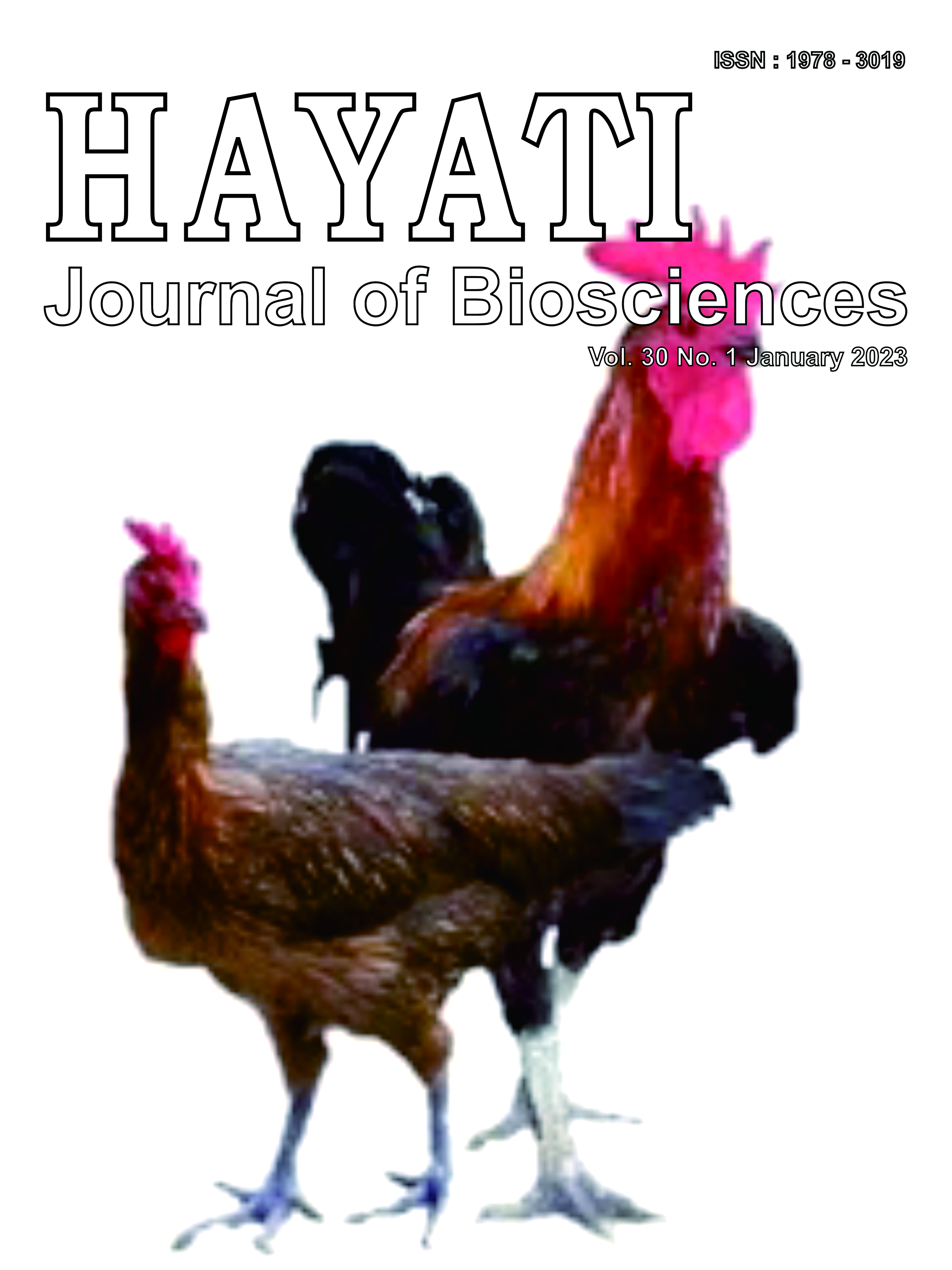Enhancing the Anticancer Activity of Squamocin for Breast Cancer Treatment Using Nanodiamond Nanoparticles: An In Vivo Study
DOI:
https://doi.org/10.4308/hjb.30.1.131-139Abstract
Squamocin is one of the annonaceous acetogenins produced by the Annonaceae family and displays potent anti-cancer activity against cancer cell lines. This study aimed to investigate the growth inhibition activity of squamocin coupled with nanodiamond on rats (Rattus norvegicus)-induced breast cancer. Twenty-five female R. norvegicus were divided into five groups (n = 5), including normal control (without any treatment), negative control, group treated with nanodiamond only (ND), group treated with squamocin only (SQ), and the group treated with squamocin coupled with nanodiamond (NDSQ). All of the animal models were induced for breast cancer, except for the normal control group. Breast cancer induction was performed using two doses of N-nitroso-N-methylurea (NMU) injection (50 and 30 mg/kg body weight) intraperitoneally and waited for 22 weeks until the tumor was detected to formed. Nanodiamond coupled with squamocin were administered by intraperitoneal injection (1.5 mg/kg body weight) for 5 weeks, one injection per 3 days. This study showed that the treatment with squamocin coupled with nanodiamond (NDSQ) significantly reduced the proliferation (Ki-67) and induced apoptosis (Caspase-3) of breast cancer cells, corresponding to the reduction of the thickness of the mammary ductal epithelium (p<0.001) and the lower level of CA-153 in serum. In addition, the treatment significantly reduced the malondioldehyde (MDA) and PI3KCA and increased the p53 level significantly. Altogether, in this study, we are the first to report the anti-cancer activity of squamocin in rat-induced breast cancer and the potency of nanodiamond as a carrier of squamocin to increase its anti-cancer activity.
Downloads
Downloads
Published
Issue
Section
License
HAYATI J Biosci is an open access journal and the article's license is CC-BY-NC. This license lets others distribute, remix, tweak, and build upon author's work, as long as they credit the original creation. Authors retain copyright and grant the journal/publisher non exclusive publishing rights with the work simultaneously licensed under a https://creativecommons.org/






















.png) Bogor Agricultural University
Bogor Agricultural University Department of Biology
Department of Biology The Indonesian Biological Society
The Indonesian Biological Society 

